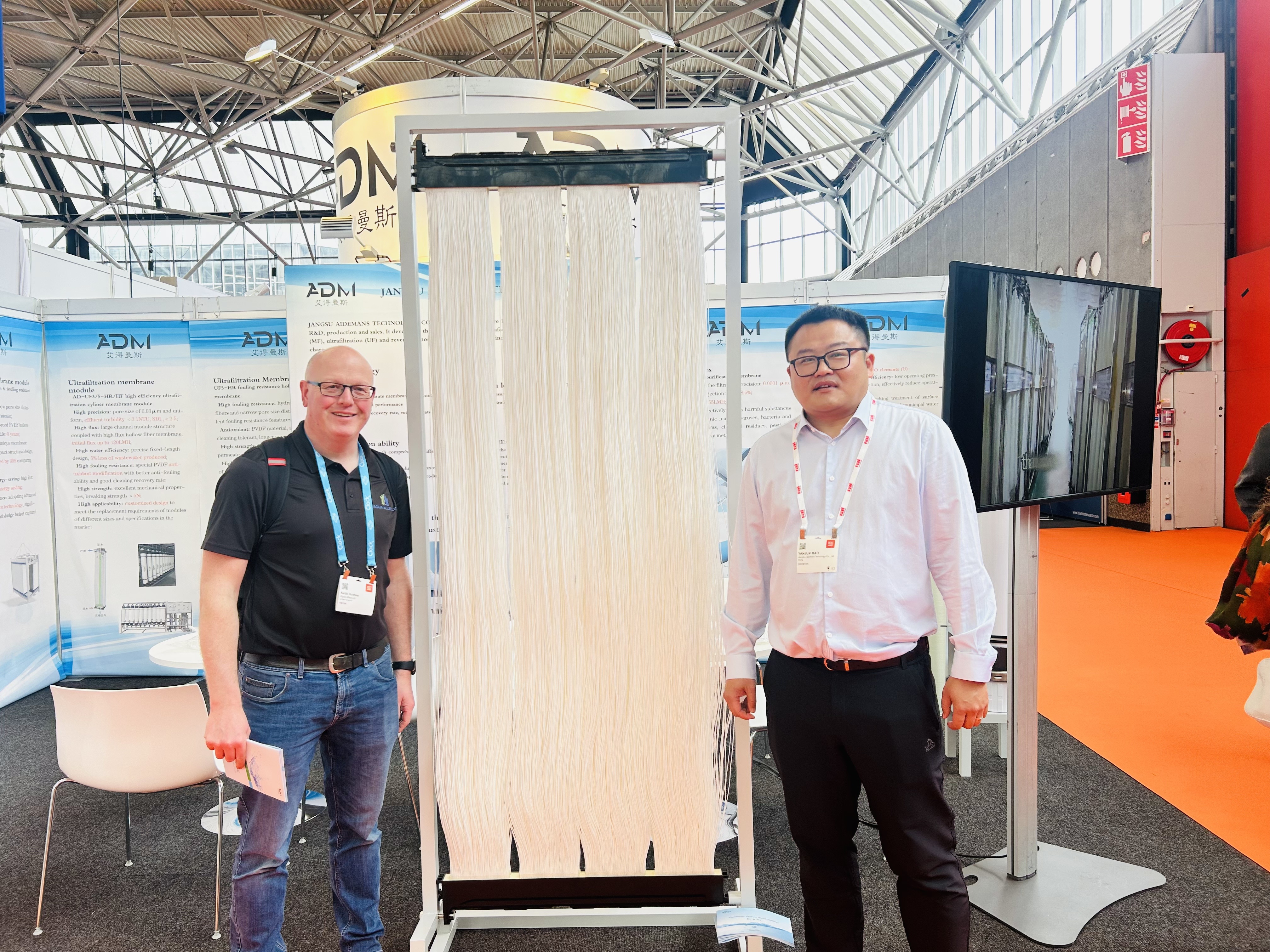How does microfiltration achieve efficient solid-liquid separation?
Release time:
2025-05-06
Characteristics of Microfiltration Membranes
Uniform Pore Size Distribution: Microfiltration membranes have a narrow pore size distribution, allowing for precise control of separation and ensuring efficient retention of target particles.
High Permeability: Microfiltration membranes have a high water flux, enabling efficient separation at low operating pressures.
Good Chemical Stability: Microfiltration membrane materials (such as polyethersulfone, polyvinylidene fluoride, and ceramics) have excellent chemical corrosion resistance and are suitable for various complex liquid environments.
High Mechanical Strength: Microfiltration membranes possess good mechanical strength and can withstand certain operating pressures and physical impacts.
Easy to Clean and Regenerate: Microfiltration membranes have smooth surfaces, are not easily adsorbed by pollutants, and are easy to clean and reuse.
The water quality of membrane filtration is superior to that of sedimentation tanks. Due to the existence of the microfiltration membrane filtration interface, particles larger than the membrane pore size are retained, and there is no phenomenon of PH-adjusted particle redissolution. The water quality of the filtered water is the same as that of ultrafiltration water;
Tubular microfiltration membrane systems do not require the addition of coagulants or only require a small amount of addition. In addition, no polyacrylamide needs to be added, only alkaline reagents such as sodium hydroxide or lime need to be added for alkaline precipitation. The addition of coagulants will produce excessive solid mud cakes, and the TDS of the treated water will also increase. In addition, polyacrylamide will cause membrane fouling, and it is difficult to restore the flux through chemical cleaning;
The large channels and cross-flow design of tubular microfiltration membranes allow them to operate at a suspended solids concentration of 2-5%. This can reduce the production of residual sludge and improve the performance of the plate and frame filter press;
Simple maintenance, the system can be designed for automatic operation, and can be switched from standby to operation at any time;
Compared with traditional sedimentation tanks, the tubular membrane system has a short process flow and requires less space for the tubular membrane frame. In addition, the tubular membrane frame is easy to expand, and the water treatment capacity can be increased by adding frames or membrane components.
Factors Affecting the Efficiency of Microfiltration Membrane Processes
Membrane Material and Pore Size: Microfiltration membranes of different materials and pore sizes are suitable for different separation needs. Selecting the appropriate membrane material and pore size is key to improving separation efficiency.
Operating Pressure: Operating pressure directly affects membrane flux and separation efficiency. Excessive pressure may lead to increased membrane fouling, while too low pressure may reduce separation efficiency.
Liquid Properties: The viscosity, pH, and solids concentration of the liquid will affect the membrane separation efficiency. For example, high-viscosity liquids will reduce membrane flux, while extreme pH values may damage the membrane material.
Membrane Fouling: The deposition of solid particles, colloids, and microorganisms on the membrane surface or in the membrane pores will cause membrane fouling, reducing membrane flux and separation efficiency.
Optimization Measures to Improve the Efficiency of Microfiltration Membrane Processes
Optimize Pretreatment Processes: Reduce the solid load entering the microfiltration membrane system and reduce the risk of membrane fouling through pretreatment methods such as sedimentation, flocculation, and pre-filtration.
Select Appropriate Membrane Materials and Pore Sizes: Select suitable membrane materials and pore sizes according to the separation target to ensure efficient retention of target particles while maintaining high membrane flux.
Control Operating Parameters: Optimize operating parameters such as pressure, flow rate, and temperature to reduce membrane fouling while ensuring separation efficiency.
Regular Cleaning and Maintenance: Regularly remove pollutants from the membrane surface and restore membrane performance by combining physical cleaning (such as backwashing and air-water washing) and chemical cleaning (such as acid, alkali, and oxidant cleaning).
Jiangsu Aidemans Technology Co., Ltd. focuses on R&D, production, and sales of fine ultrafiltration membranes and zero-discharge reverse osmosis membrane products in the field of industrial zero-discharge. The main products include ultrafiltration membranes, membrane components, reverse osmosis membranes, microfiltration membranes, and membrane fibers. With the development strategy of "resource regeneration and green low carbon", it assists in the reuse of valuable materials in industrial zero-discharge, reduces carbon, nitrogen, and phosphorus emissions, focuses on challenging technologies, challenges threshold markets, and becomes a specialized and new in-depth enterprise.
Related Content

